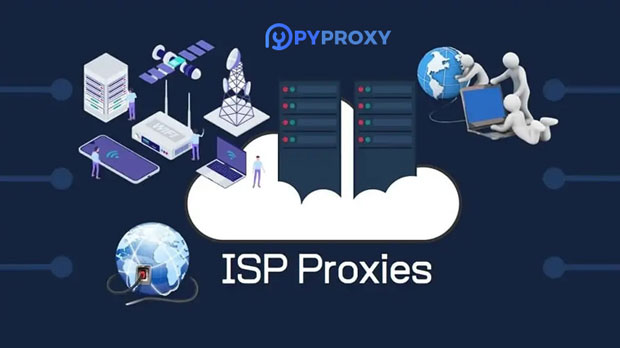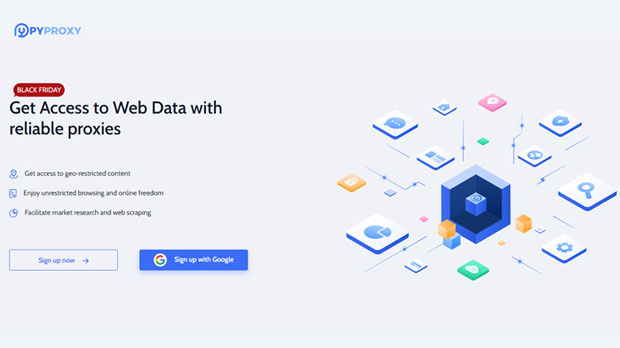Identifying the real IP type behind a Static residential proxy is a critical skill, especially for users involved in security, data scraping, and access management. Static residential proxies offer several benefits, including improved anonymity and a stable IP address, but they can also conceal a user's actual location and identity. In this article, we will explore how to accurately identify the underlying IP type of static residential proxies, discuss the methodologies, and examine practical techniques that can help distinguish between proxy and real IP addresses. Understanding Static Residential ProxiesStatic Residential Proxies are IP addresses provided by Internet Service Providers (ISPs) to homeowners, which are used to access the internet. These proxies are categorized as "static" because the IP addresses they use remain unchanged for extended periods, unlike dynamic proxies that are frequently reassigned. Unlike datacenter proxies, which originate from large-scale data centers, residential proxies are harder to detect since they are associated with real residential locations, making them more difficult to trace.However, due to their ability to mask true IP addresses, it becomes essential to understand how to distinguish between the proxy and the real IP address. Various techniques can help reveal the true identity behind these proxies. 1. Checking for Geolocation InconsistenciesOne of the most common methods to identify whether an IP is a static residential proxy is through geolocation checks. Proxies, especially residential ones, may show a consistent geographical location over time, but the IP addresses they represent may not always match with the real-world location of the user. For example, a proxy ip might show a location in one city, but if the traffic originates from a completely different region, this inconsistency can be a red flag.By utilizing geolocation tools and comparing the IP location to the user's known location, discrepancies can be spotted. Legitimate residential IPs should have a geographical proximity to the user's actual location, while proxy ips may show more significant inconsistencies, such as mismatches between user location and the IP's geolocation.2. Reverse DNS LookupsAnother effective method for detecting Static Residential Proxies involves performing a reverse DNS lookup. A reverse DNS lookup allows you to query the domain name associated with an IP address. Typically, residential IP addresses from ISPs may resolve to certain ISP-related hostnames, such as "isp-name.static.residential.domain.com."Static Residential Proxies, however, may appear with generic or unknown domain names, revealing their proxy nature. If the IP address resolves to a datacenter or suspicious hostname, it’s an indication that the address is likely a proxy rather than a genuine residential one.3. Analyzing Traffic PatternsMonitoring traffic patterns is another insightful approach for identifying whether an IP address belongs to a Static Residential Proxy. Real residential IP addresses exhibit behavior that mirrors normal user activity, such as random browsing patterns, occasional lags, and interactions that correlate with actual user behavior. On the other hand, proxy traffic is often more predictable. It may display repetitive, uniform patterns, often automated or scripted. For instance, if an IP address consistently makes similar requests to multiple websites within short intervals, it's likely coming from a bot or automated proxy network rather than a genuine residential IP.4. Deep Packet Inspection (DPI)Deep Packet Inspection (DPI) allows for a more technical and in-depth analysis of network traffic. This method inspects the actual data packets sent over the network, looking for identifiable markers that can differentiate a proxy IP from a real IP. DPI can detect anomalies like missing or altered headers, which can point to the use of proxies.Static Residential Proxies may have distinctive signatures in packet-level data, especially if they are part of a larger proxy network. By carefully examining these characteristics, it is possible to differentiate a legitimate residential connection from a proxy.5. Fingerprinting TechniquesFingerprinting is a sophisticated technique that involves identifying unique characteristics of a user’s device or browsing session. This can include the operating system, browser version, screen resolution, and even the installed plugins. Each of these elements creates a “fingerprint” of a user’s setup.When using Static Residential Proxies, the fingerprint may remain static, meaning that it consistently appears to come from the same device or network. By analyzing changes in the fingerprint over time, you can identify whether the IP is genuinely residential or is masking the real identity using a proxy.6. Using IP Reputation ServicesMany organizations provide IP reputation services that track and catalog the behavior of IP addresses across the internet. These services collect data on IPs to determine their likelihood of being part of a bot network, a VPN, or a proxy service.By cross-referencing an IP address with a reputation service, you can quickly assess whether the Static Residential Proxy you are dealing with has been flagged as suspicious or involved in malicious activities. This service can help identify proxies by evaluating the history of IP addresses.7. Monitoring IP Rotation and UsageStatic Residential Proxies are meant to stay the same for a prolonged period, but they can still be rotated or changed. Monitoring the frequency of IP rotation and whether the same proxy IP is used consistently can reveal suspicious behavior. If the IP address changes more frequently than expected for a "static" residential IP, it could indicate proxy use or evasion tactics.By tracking the consistency of IP usage, one can deduce if the address belongs to a legitimate residential user or if it’s part of a proxy network trying to mask its true nature.In conclusion, identifying the real IP behind a Static Residential Proxy requires a mix of technical and practical approaches. Geolocation inconsistencies, reverse DNS lookups, traffic pattern analysis, deep packet inspection, and fingerprinting all provide valuable insights into whether an IP address is truly residential or is simply masking its identity through a proxy. These techniques are critical for businesses, security experts, and individuals concerned with privacy and cybersecurity.While Static Residential Proxies are often effective in masking users’ identities, understanding and employing these detection methods can help expose the real nature of an IP address and ensure more accurate data analysis and protection.
Aug 20, 2025



































































